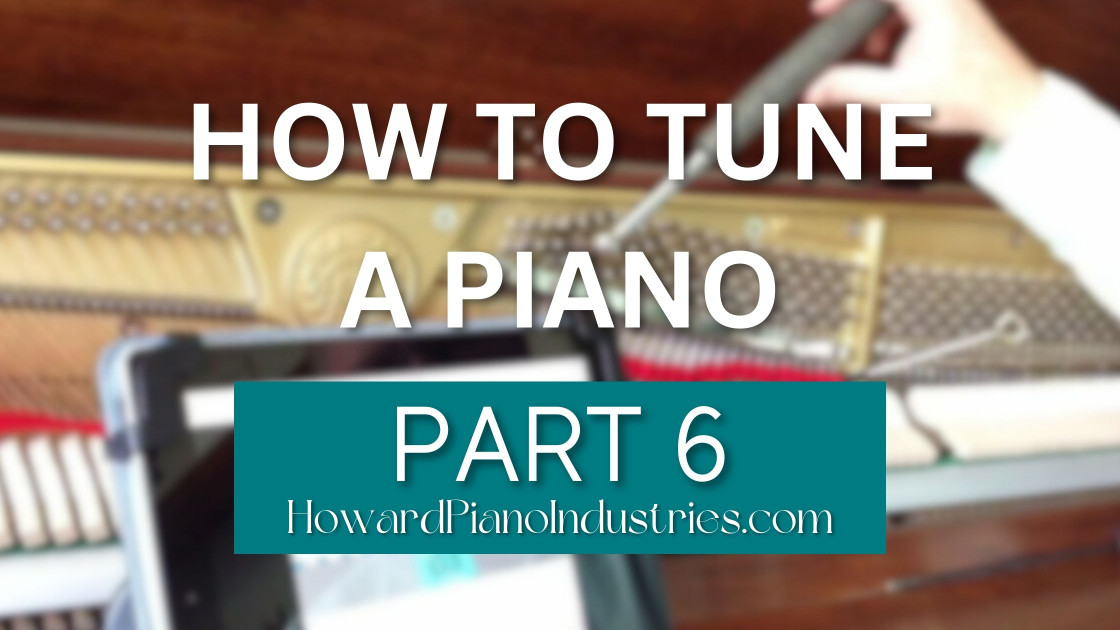How to Tune a Piano (Part 6)
Sep 20, 2023
How to Tune a Piano - Part 6: Tuning the Unisons (Piano Tuning and Repair)
Welcome to our Series on Piano Tuning and Repair.
Part 6 of our How to Tune A Piano Video Series shows how to tune the unisons once you've tuned one string per note on a section of the piano. By the time we're done with this video we will have tuned the middle section of the piano.
If you want to see more of our Piano Tuning and Repair Series, click here to access the entire playlist.
Video Transcript:
Introduction
Welcome back. This is our next video in our how to tune a piano series by Howard Piano Industries. In our last video we went through and tuned one string per note of this mid-range section, between down here, what's called the bass break and the treble break. As you can see there's division in the plate and the way the strings are strung in these sections.
So in this particular video we're going to go through and show you how to tune a unison, and what that means is tuning in unison. Most of the notes have three strings per note. Some F2 and the bottom second of a bottom few have just one string per note but once we've got one string per note tuned we have to go through and tune the other strings to the one that we've already tuned. So what we're going to do here, we'll go down here to the bottom of this mid-range section.
I've already tuned the left string, so what I'm going to do is, I pull my mute out, and whenever you put the mute in or out make sure you push on that damper pedal to lift the dampers so that it doesn't squish the damper heads. So I'm going to, you can hear a difference there, when I... that's one string, that's two strings, so hopefully you can hear that there's a little bit of vabratta tones between those two strings.
So I'm going to go ahead and manipulate the tuning pin. I'm going to pull it up and pitch to match because I knew that when I tuned most of these other strings they were below pitch. So I know I have to come up with the unisons to bring them up to the pitch of the others and again, the same thing when you're tuning a single note. As you want to pull the pitch above, and you can kind of hear as you're pulling it up, when it gets to that point of where it should be. Most likely, if you let go of a tuning hammer, at that point it would go back flat because there is a little bit of a bend in the head of that pin when you turn it, so you have to come up above the pitch and then kind of notch it or knock it down to the pitch where it should be. That's fairly good.
Go to the next note and again, the mute was between the left string over this low E or the E3, and I'm sorry, the mute was between the right string of the E3 and the left string of the F4. We just tuned the left string so we want to make sure we're tuning the correct string, then we're going to go to the right string, the F#3. Pull out the mute after we push the damper pedal down and now we're doing the left, I'm sorry, the right string because that's the one that was muted, G3 Now we're into notes that have three strings per note so now we're going to do the left first and then the right and then we'll do that on each note.
We've already got the left string unmuted right string Now it's pretty good because we tuned that, I think in the last video. Sometimes when you're notching it down you'll overshoot it and you've got to pull it back up again. As I mentioned in our introduction to the videos series, we're not going to be achieving the concert level tuning but basically we've got a fairly good tuning on this mid-range section.
Not perfect, but it's a fairly good job and certainly much better than it was before we started and that's what we're looking for is just to get you started in piano tuning. To tune your own piano and make it sound better than it does now.

